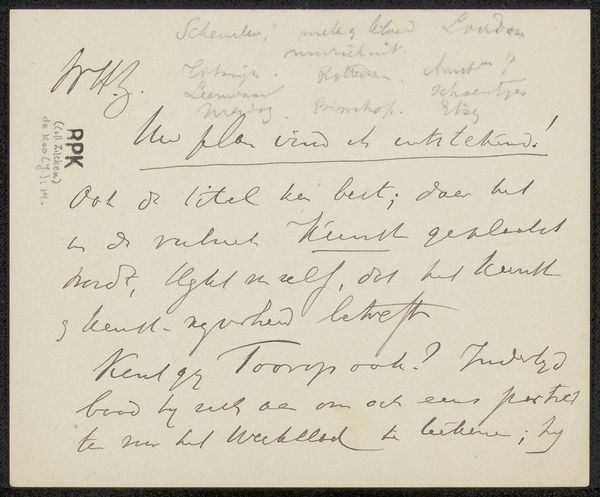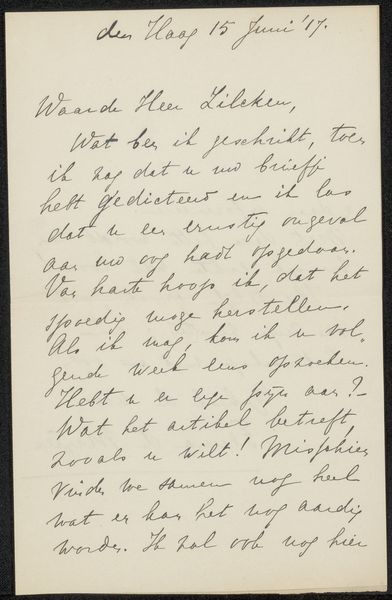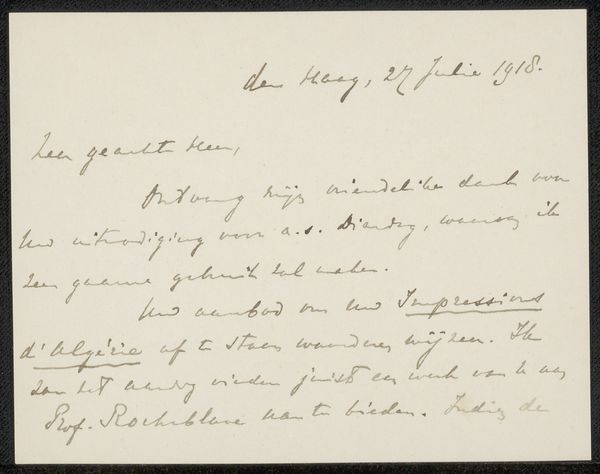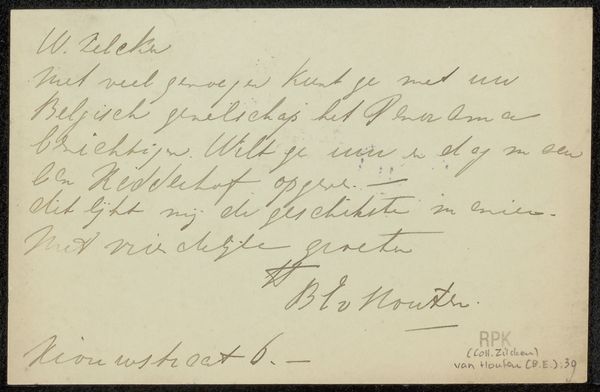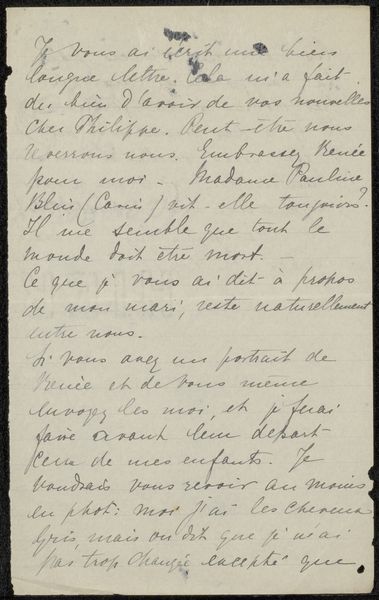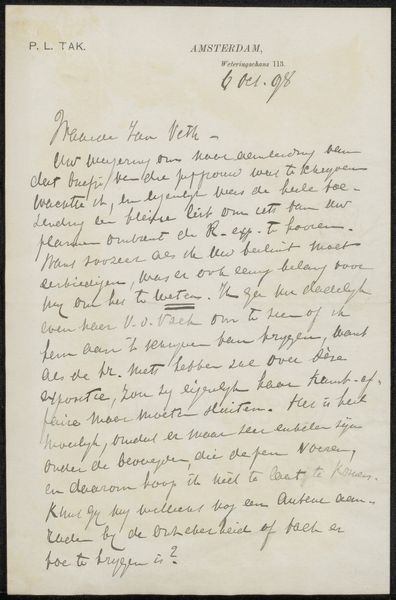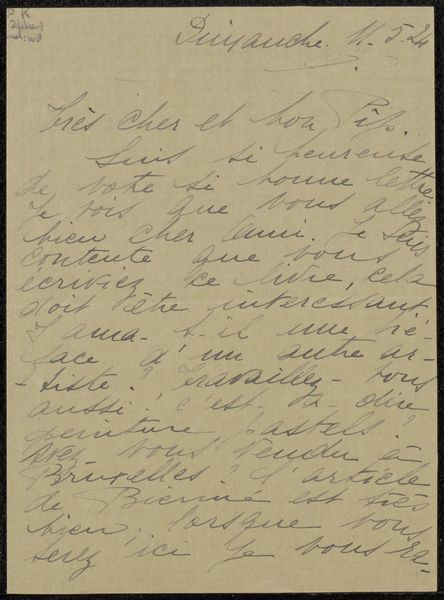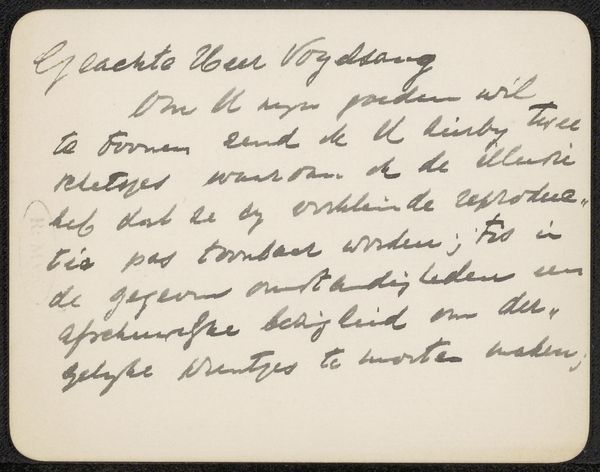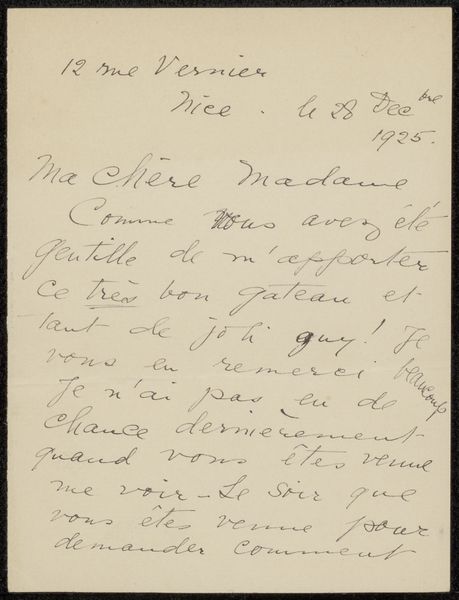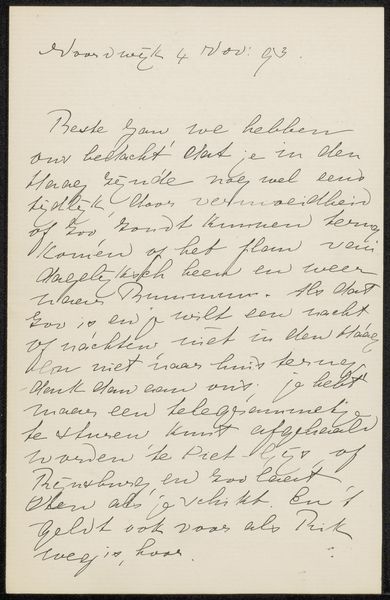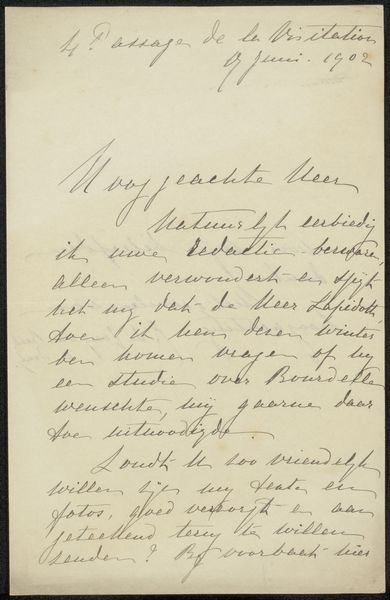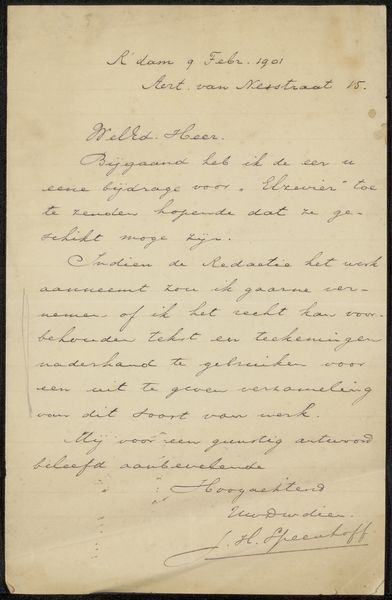
drawing, paper, ink
#
portrait
#
drawing
#
type repetition
#
script typography
#
hand-lettering
#
dutch-golden-age
#
old engraving style
#
hand drawn type
#
hand lettering
#
figuration
#
paper
#
ink
#
hand-drawn typeface
#
thick font
#
handwritten font
#
golden font
Copyright: Rijks Museum: Open Domain
Editor: This piece is entitled "Brief aan Philip Zilcken," and it's estimated to have been created sometime between 1913 and 1919. It's ink on paper. The handwritten nature of the note feels really personal, like we're intruding on a private moment. What stands out to you about this work? Curator: For me, it's the act of inscription itself that speaks volumes. The labor involved in meticulously forming each letter by hand, using ink, reveals a commitment of time and resources. Paper, often associated with administrative or bureaucratic function, is here employed for intimate exchange. How does this collision of materiality inform the social context? Editor: Well, knowing that paper could have been expensive or somewhat limited at the time, the act of using it for a personal letter shows the importance of the message or the relationship between the writer and recipient. It adds weight to their communication, right? Curator: Precisely! And consider the script, its forms indicative of particular training and class. The embodied labor of writing itself becomes a performance, signaling social status and cultural capital. Editor: So it's not just what the letter *says,* but how it’s made and the effort involved that gives it meaning? Curator: Exactly! This seemingly simple note highlights the complex interplay between materials, process, and social relations that often goes unnoticed when we focus solely on content. Editor: That's a perspective I hadn't fully considered before. Thinking about the material reality of this letter, the cost of the materials and the effort it took to create, really changes how I understand its message. Curator: It makes you realize that art exists not in a vacuum, but in a material world, shaped by economic and social forces.
Comments
No comments
Be the first to comment and join the conversation on the ultimate creative platform.
